Last winter, Louise and I had a blast collaborating on the French Remix of Foxy and Friends. Recently, we began brainstorming some new project ideas. She was excited to collaborate again but this year had a new challenge to manage: a split class with nine Grade 2 students and eighteen Grade 1 students. Louise shared that she and her teaching partner had mostly been teaching the grades separately, with varying levels of success.
As we chatted, Louise described an upcoming water cycle unit she was planning. This reminded me of a terrarium building class I’d taken earlier in the fall. The water in the terrarium tends to condense on the glass and fall back to the soil daily! Louise's eyes lit up: "The class should make terrariums!" And just like that, the project was born.
Planning for a Split Class 🔀
We designed the project to include content areas from both Grade 1 and 2 while weaving in essential science curriculum goals through hands-on discovery. Here's how it all came together.
Grade 2 ✌️
Grade 2 students focused on the water cycle through their own mini-ecosystems. They created terrariums with clay pellets, rocks, soil, and rooted plants (provided by Louise). After adding water and sealing their jars, they observed the full water cycle in action – watching water evaporate, condense on the jar walls, and "rain" back down.

Through daily Seesaw documentation, the students developed their observation skills while exploring their natural curiosity about how water moves through their terrarium. Class discussions let them compare findings and share discoveries about their mini water cycles.
Grade 1 ☝️
Grade 1 students tapped into their natural curiosity about living versus non-living things in their world. They ventured into the schoolyard to collect items, making thoughtful decisions about what to gather for their observation jars.
As they document their findings on Seesaw, they practiced scientific observation skills while exploring the characteristics that make something "living" or "non-living."
We designed the project to serve different learning objectives for each grade while keeping the hands-on portion of the activity pretty similar. This parallel structure allowed us to teach the grades together while maintaining distinct learning objectives.
Project Day 💚
There were rocks, plants, and dirt everywhere — but the controlled chaos was worth it. We started by explaining what terrariums are and their connection to the water cycle.

To help students visualize the changes they'd be observing, I shared photos from my recent terrarium-making class showing the progression of growth from my plant over time, as well as changes to the water cycle happening inside the jar.
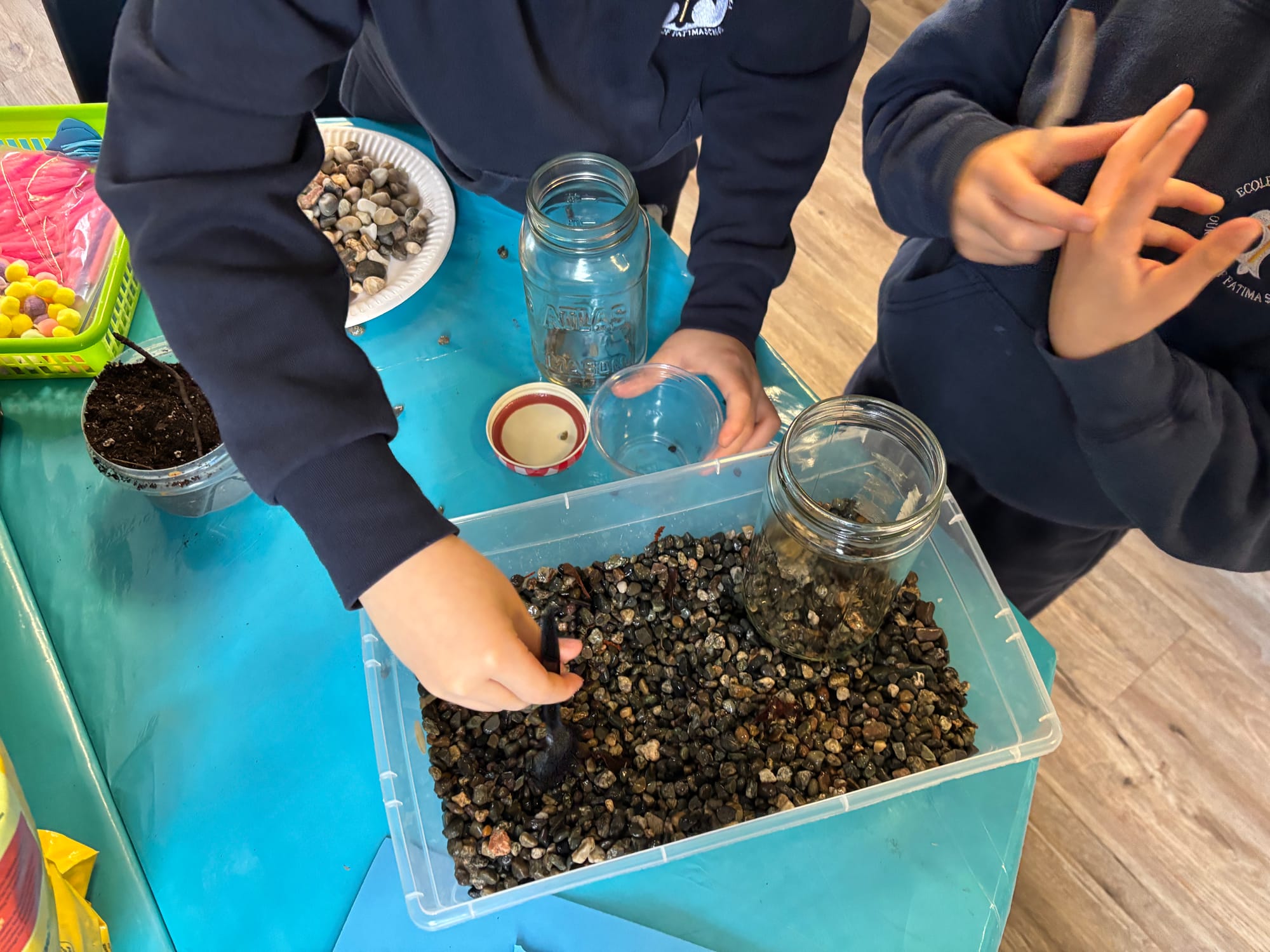
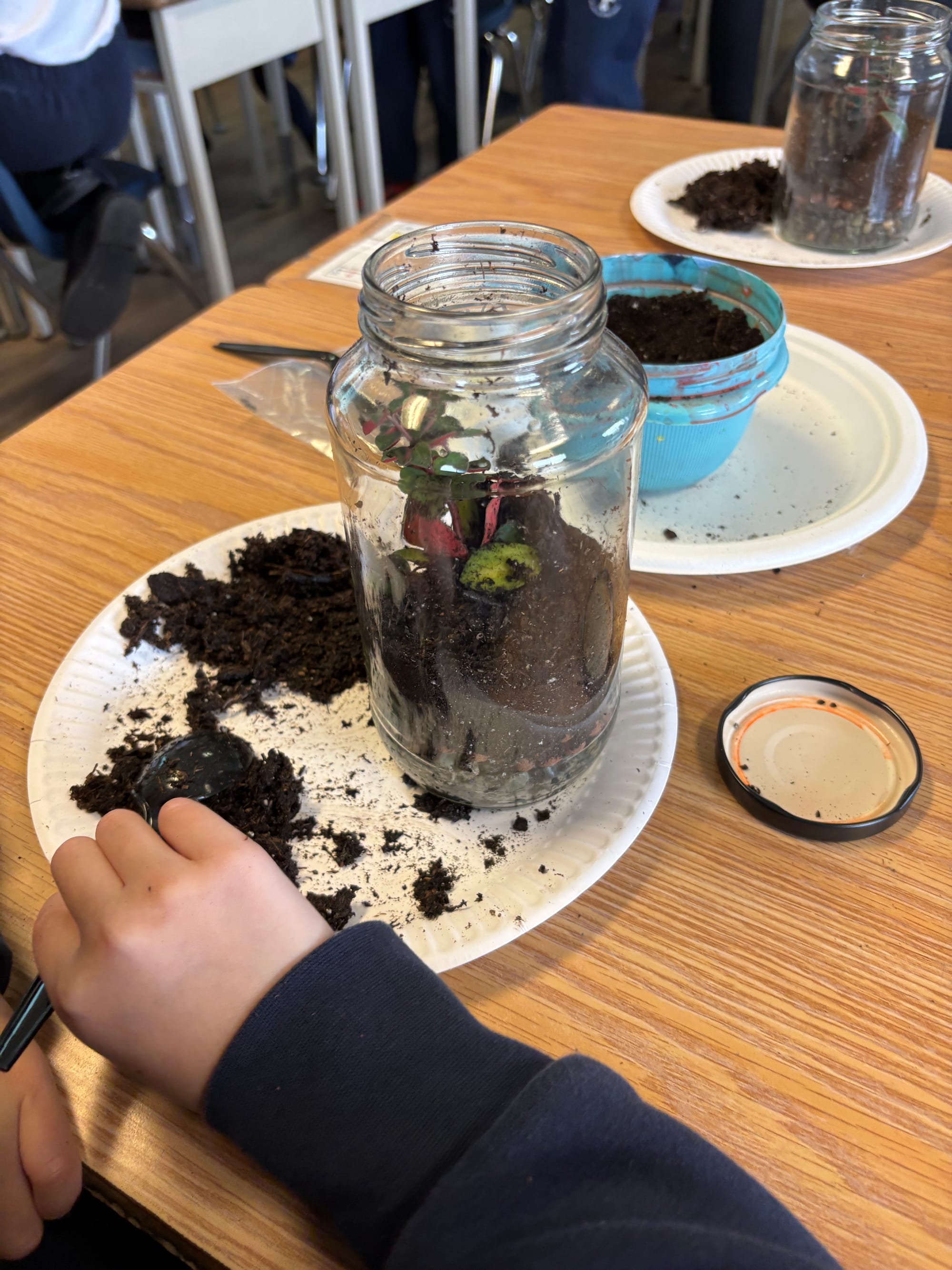
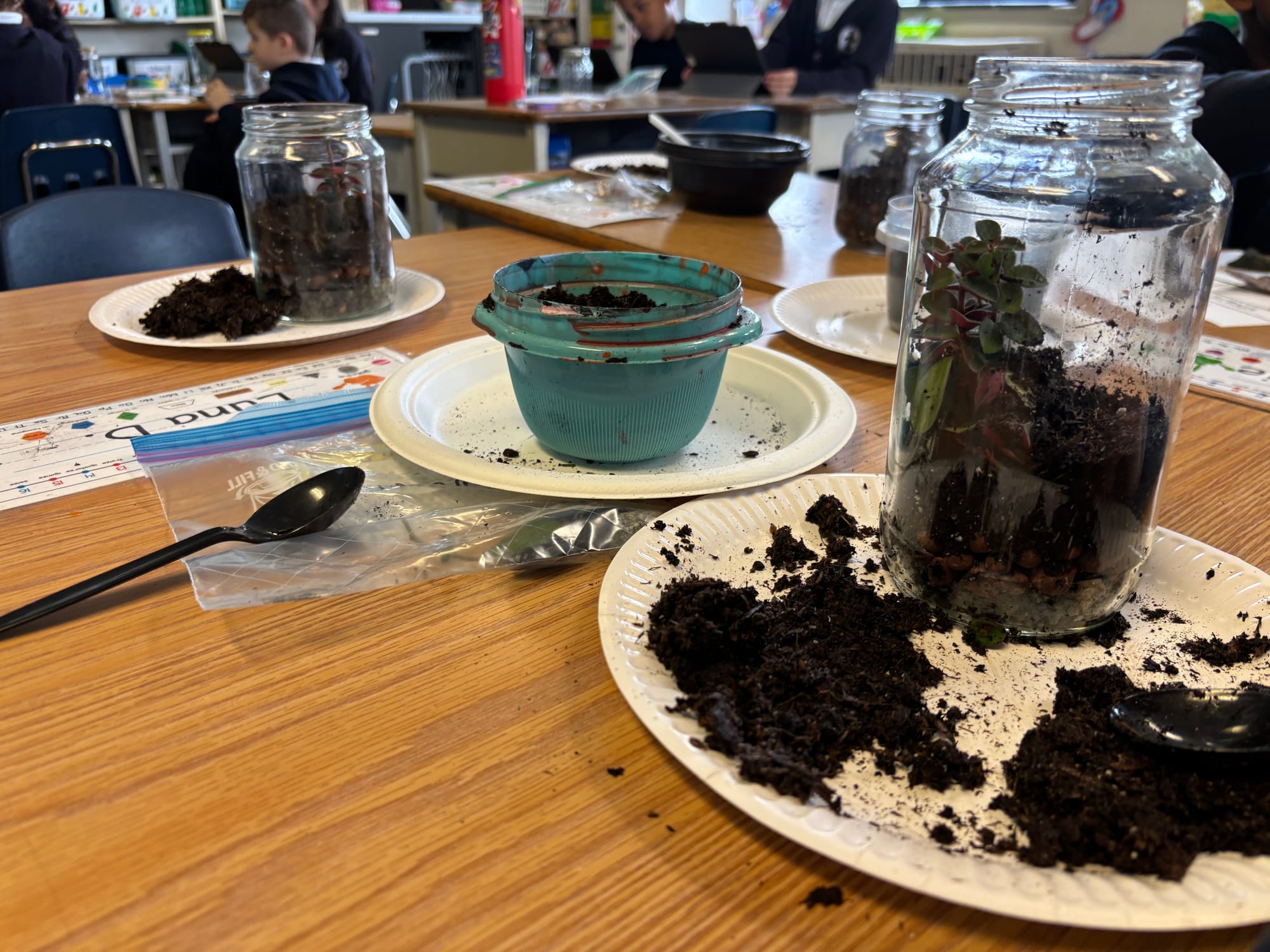
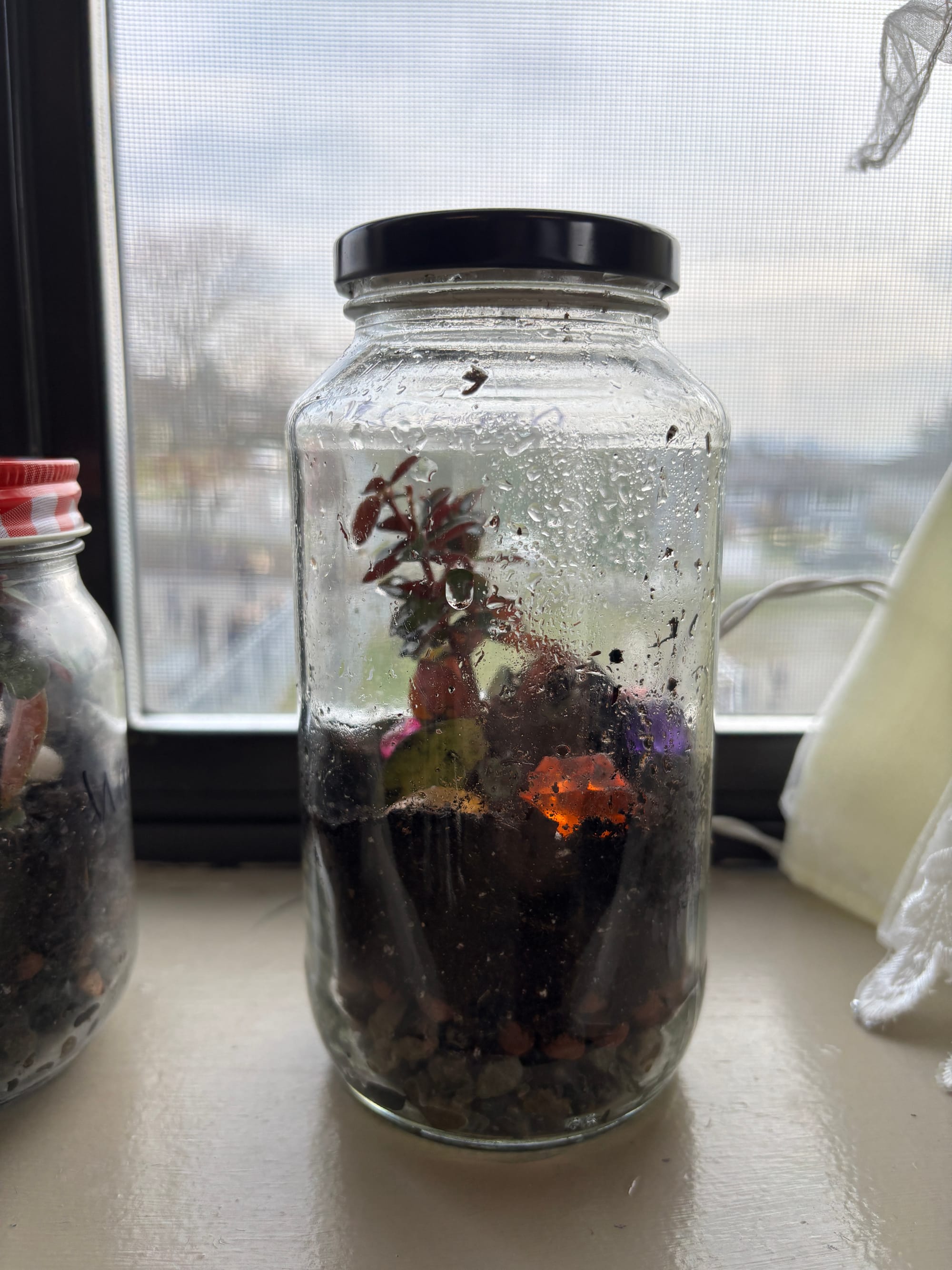
The classroom was delightfully dirty and hands were cleaned for longer than usual at the end of class!
The students learned the importance of layering materials, to allow water to properly drain and get absorbed by the plants. Everyone brought their own jar that had a different shape and size, so students had to layer their materials accordingly to leave enough space for their plant to breathe and grow.
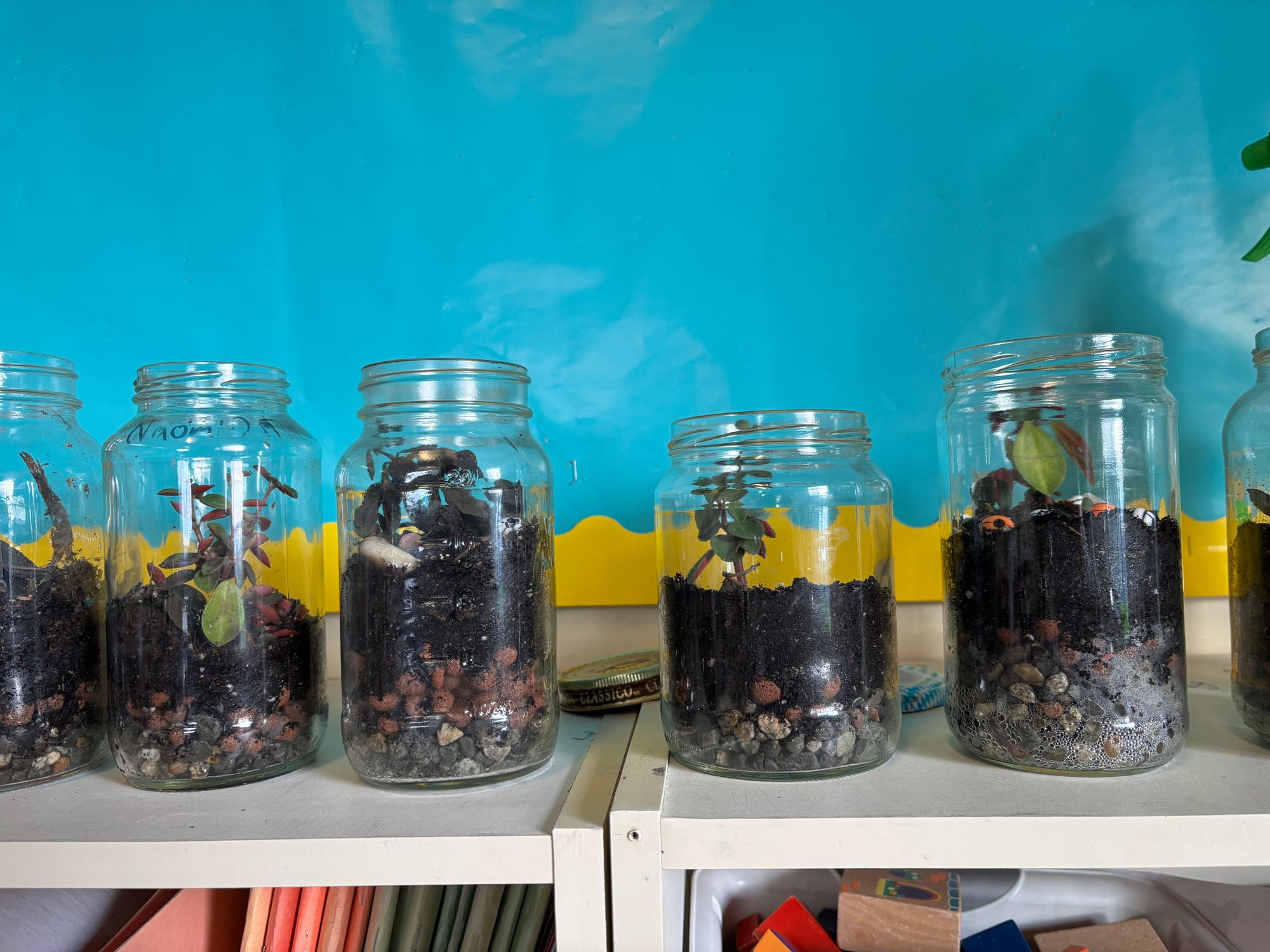
While the Grade Twos assembled their terrariums, the Grade Ones had their own special mission. The class went outside to collect items for their living vs non-living classification project.
They created their own observation jars, ensuring they felt equally involved in the hands-on learning experience. Louise even had a small selection of fun trinkets for the students to put inside their jars as non-living examples.
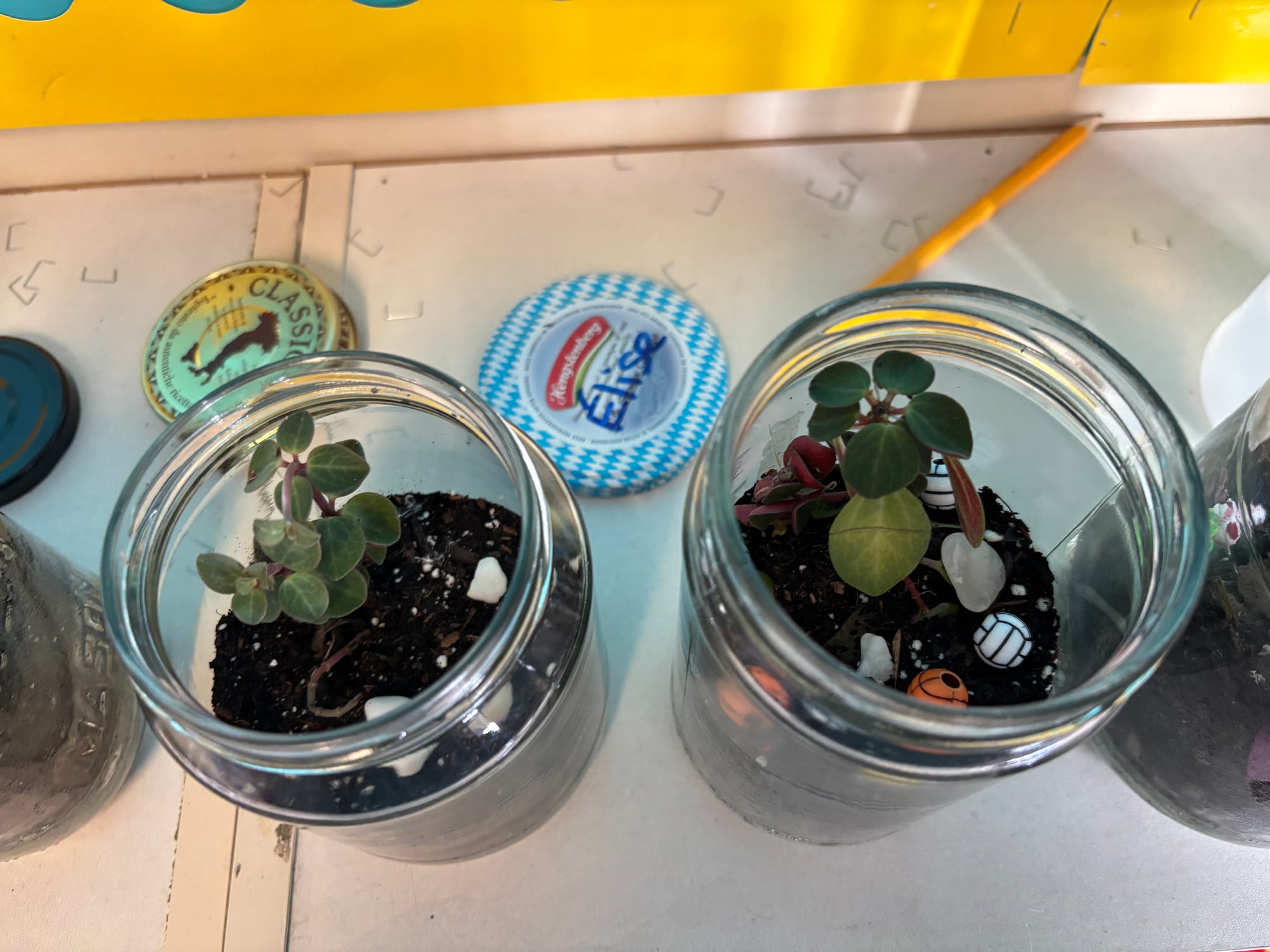
Daily Observations 👀
Louise created a simple template on Seesaw for daily documentation. I suggested encouraging students to record any notable changes they observed throughout the day.
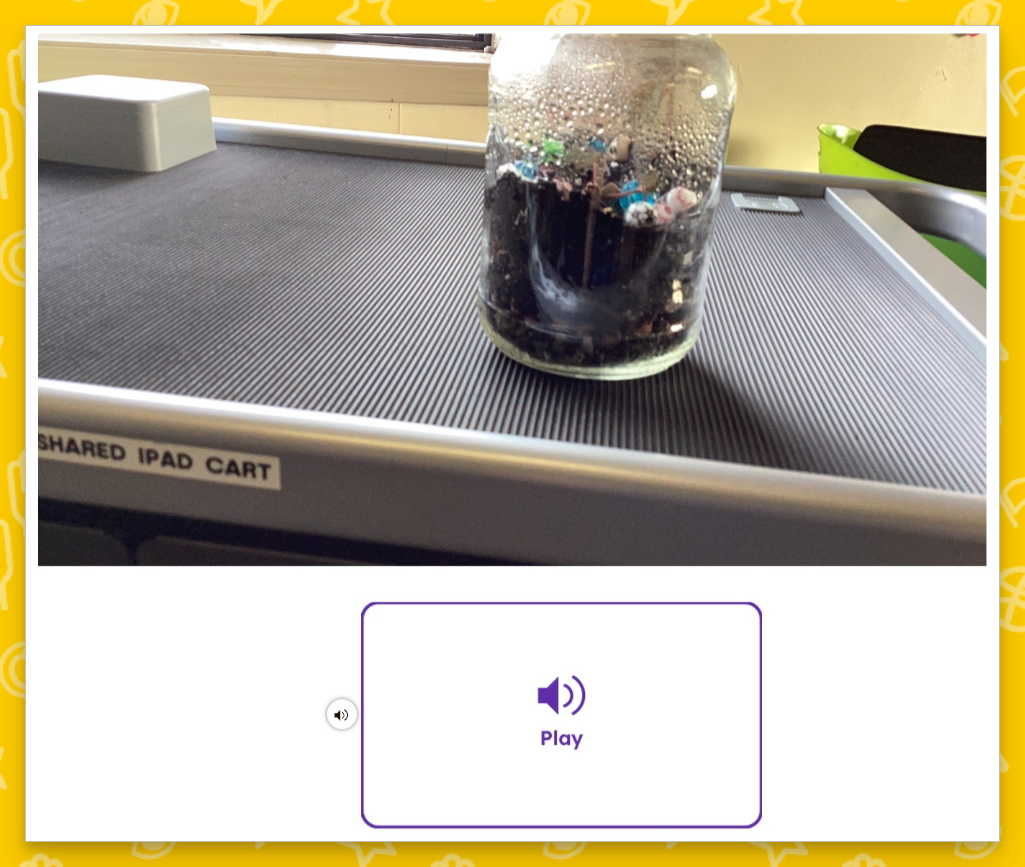
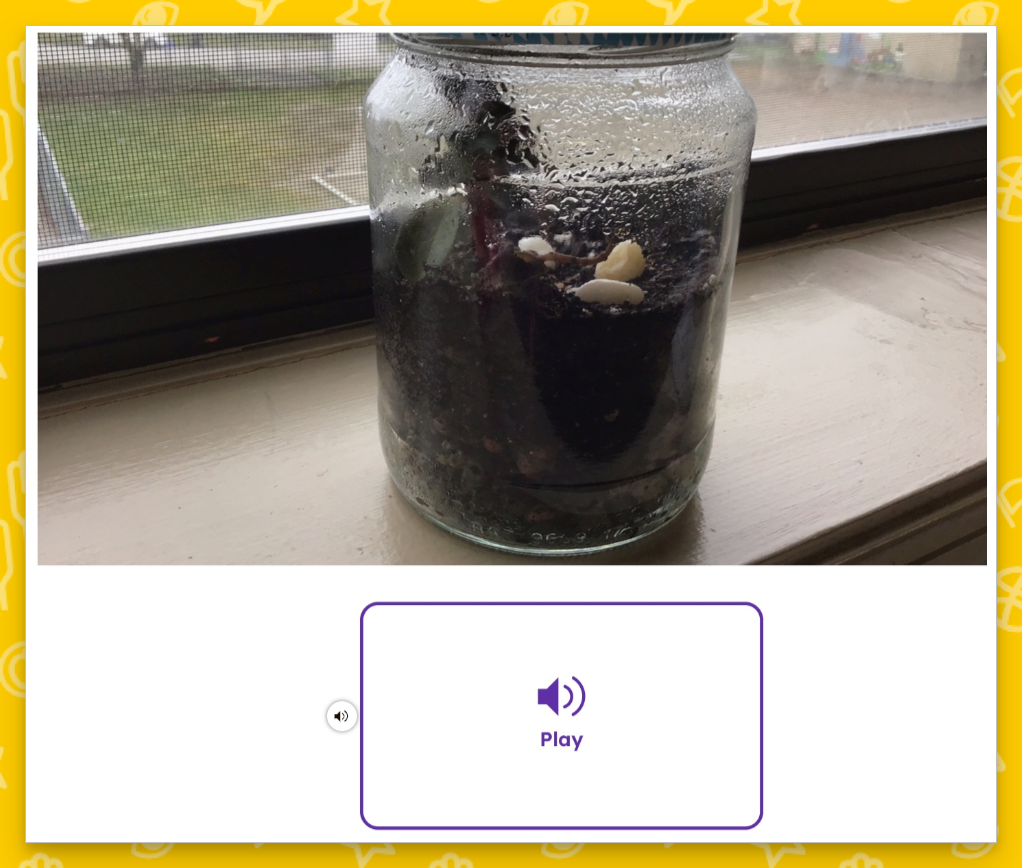
Students record audio clips of their daily observations. Example 1 & Example 2
The magic of this project lies in its ability to meet different learning objectives while keeping students engaged in a similar hands-on activity. It's a perfect example of how split grade classrooms can turn potential challenges into opportunities for rich, integrated learning experiences.
Planting Knowledge 🌱
Are you a plant parent? Nick has recently been working with the Plant Doctor in Vancouver to redo the greenery in his home. And that Terrarium class Jen took? You should take it too!

